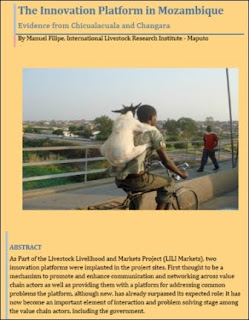Demand for animal products has been increasing rapidly in Bangladesh due to urbanization and increases in per capita income.
There are rudimentary indications that demand for improved food quality and safety has also been increasing and that consumers were willing to pay higher prices for such attributes of products.
However, there is little empirical evidence on the criteria and indicators of quality and safety that consumers use in their buying decisions, or that suppliers use in differentiating products to promote sales, or the extent to which consumers are willing to pay for such attributes.
This study is the first attempt to comprehensively characterize and quantify Bangladeshi urban demand for animal products with a focus on quality and safety.
Based on a multi-stage sample survey of 900 households from Dhaka and Mymensingh cities, successive analyses present statements of preference based on ratings, identified quality criteria, stated sources of supply and recent purchasing behaviour both at home and away from home, and econometric analysis of relationships between price ratings and quality ratings across attributes, so as to generate willingness to pay for those attributes.
The findings show that officially defined grades and quality standards of livestock products are either absent or poorly defined and enforced.
On the other hand, producers and consumers in the market use specific attributes or criteria and indicators to differentiate quality and safety of livestock products and they also charge and pay different prices based on those attributes.
Although targeted at urban populations, considerable variation between locations in terms of the product preferences and attributes used to differentiate quality was identified.
Establishment of standards and grades will become necessary to meet consumer demand on the one hand and facilitate producers and market agents to respond to consumer demand on the other.
Whether smallholders will have any comparative advantage in supplying an expanding market requiring more homogenous and better quality and safer products need to be studied regularly along with studies on consumer demand because of the dynamic nature of the emerging and evolving market, the industry and the sector.
Access the report here.
Citation
Islam SMF and Jabbar MA. 2010. Consumer preferences and demand for livestock products in urban Bangladesh. ILRI Research Report No. 23. ILRI (International Livestock Research Institute), Nairobi, Kenya.
There are rudimentary indications that demand for improved food quality and safety has also been increasing and that consumers were willing to pay higher prices for such attributes of products.
However, there is little empirical evidence on the criteria and indicators of quality and safety that consumers use in their buying decisions, or that suppliers use in differentiating products to promote sales, or the extent to which consumers are willing to pay for such attributes.
This study is the first attempt to comprehensively characterize and quantify Bangladeshi urban demand for animal products with a focus on quality and safety.
Based on a multi-stage sample survey of 900 households from Dhaka and Mymensingh cities, successive analyses present statements of preference based on ratings, identified quality criteria, stated sources of supply and recent purchasing behaviour both at home and away from home, and econometric analysis of relationships between price ratings and quality ratings across attributes, so as to generate willingness to pay for those attributes.
The findings show that officially defined grades and quality standards of livestock products are either absent or poorly defined and enforced.
On the other hand, producers and consumers in the market use specific attributes or criteria and indicators to differentiate quality and safety of livestock products and they also charge and pay different prices based on those attributes.
Although targeted at urban populations, considerable variation between locations in terms of the product preferences and attributes used to differentiate quality was identified.
Establishment of standards and grades will become necessary to meet consumer demand on the one hand and facilitate producers and market agents to respond to consumer demand on the other.
Whether smallholders will have any comparative advantage in supplying an expanding market requiring more homogenous and better quality and safer products need to be studied regularly along with studies on consumer demand because of the dynamic nature of the emerging and evolving market, the industry and the sector.
Access the report here.
Citation
Islam SMF and Jabbar MA. 2010. Consumer preferences and demand for livestock products in urban Bangladesh. ILRI Research Report No. 23. ILRI (International Livestock Research Institute), Nairobi, Kenya.



















